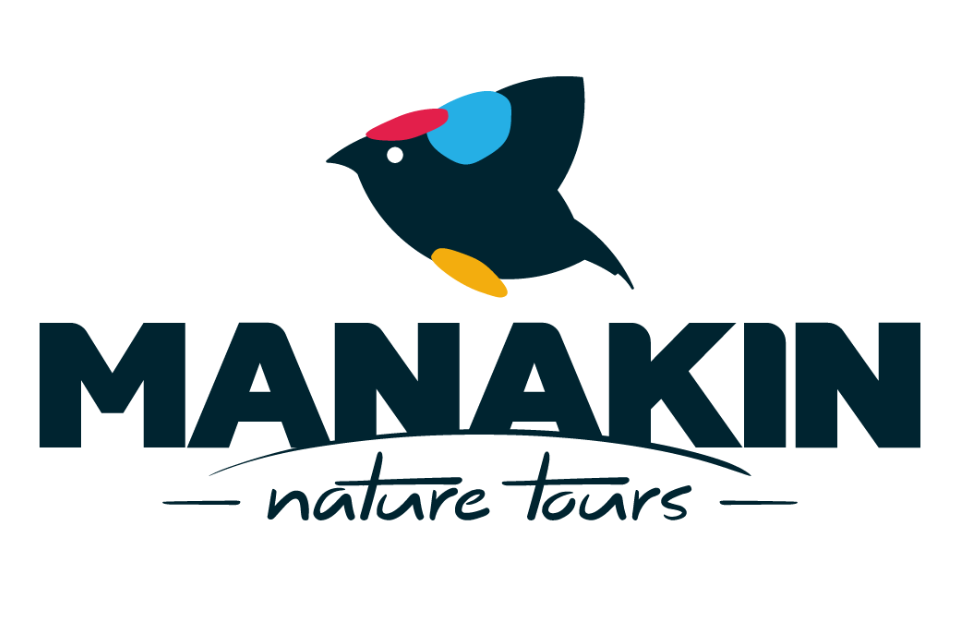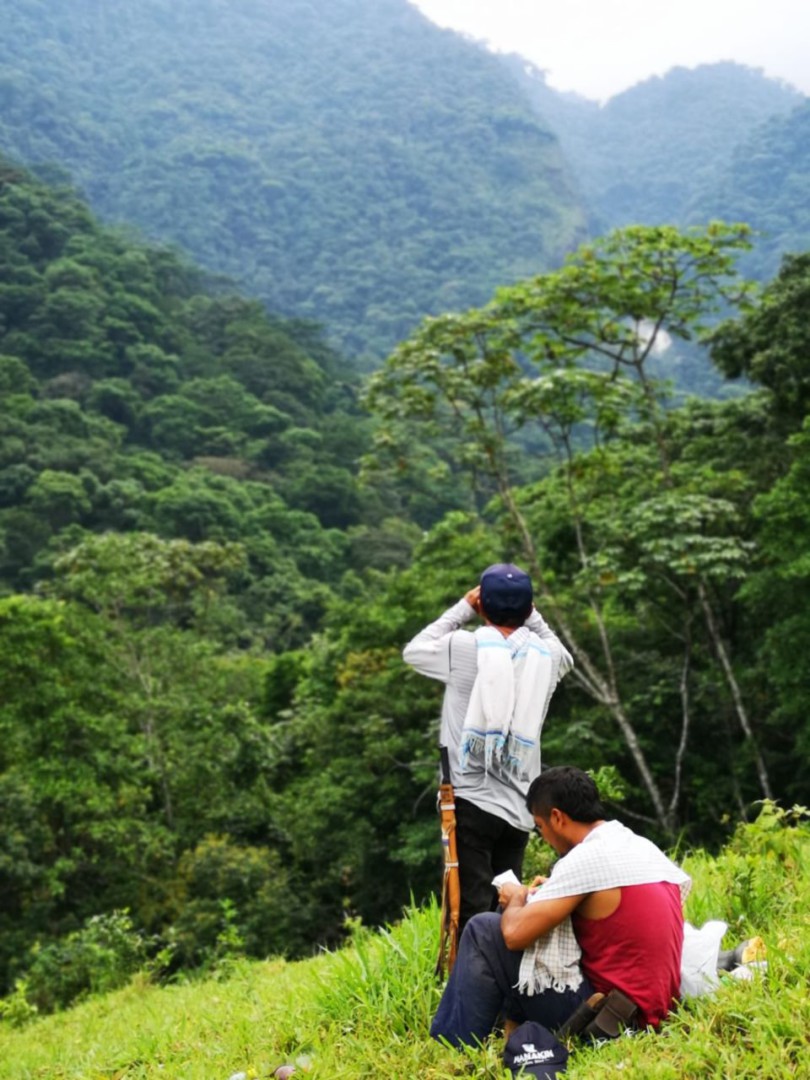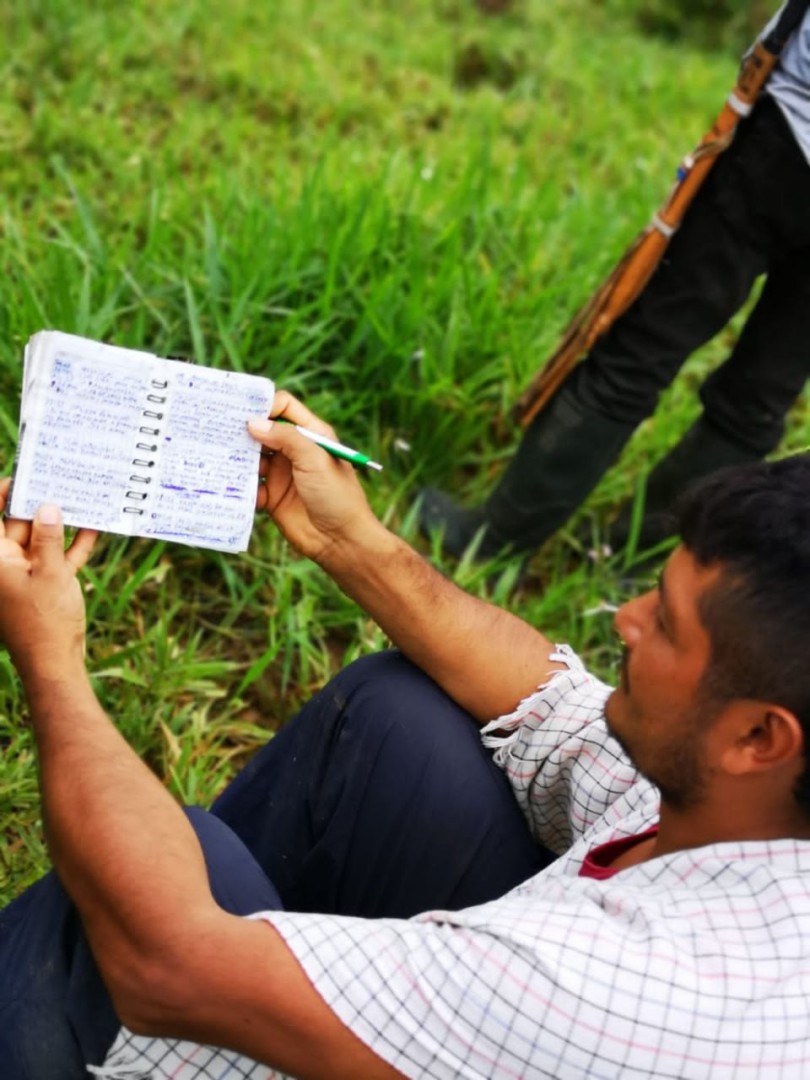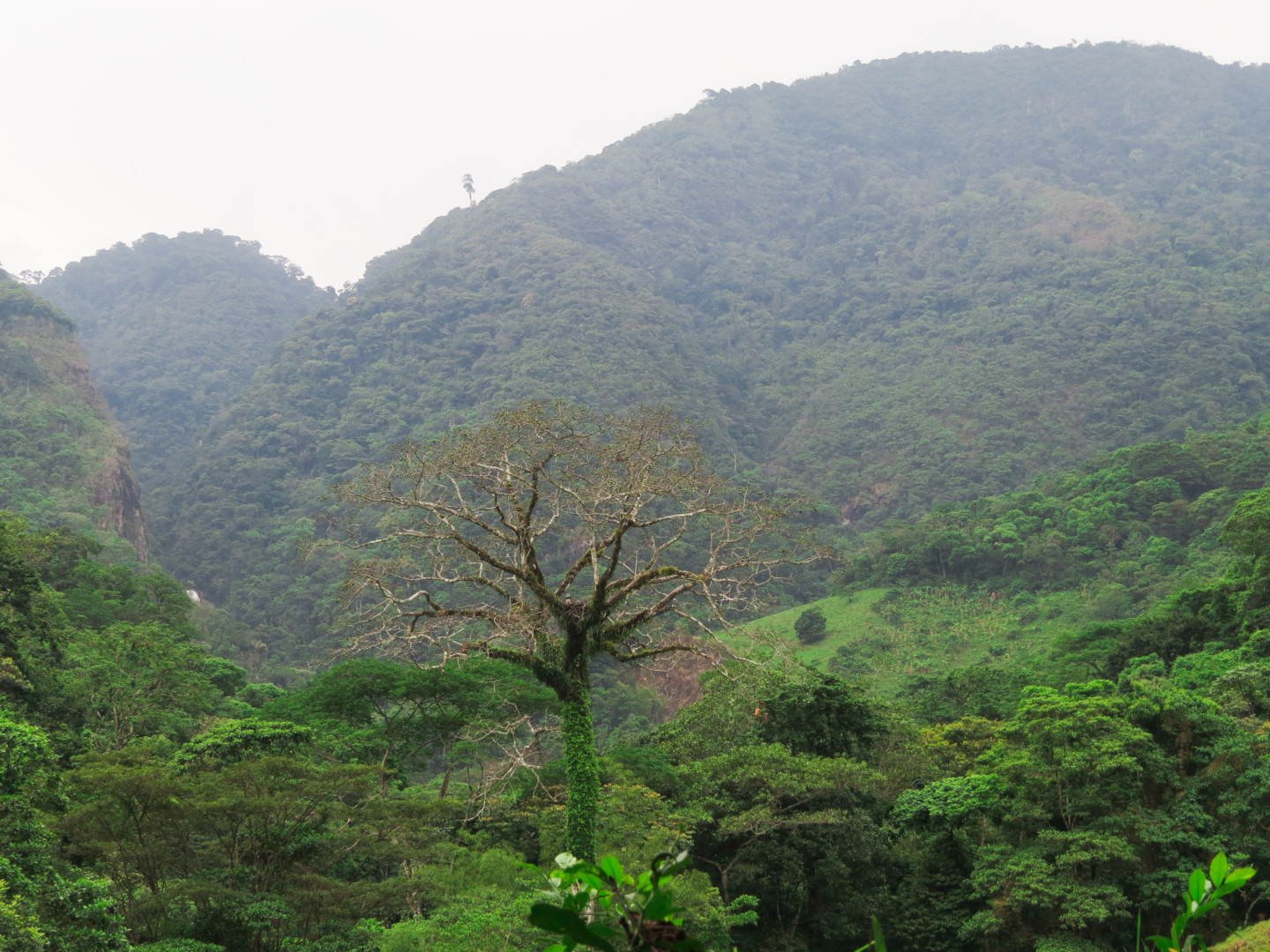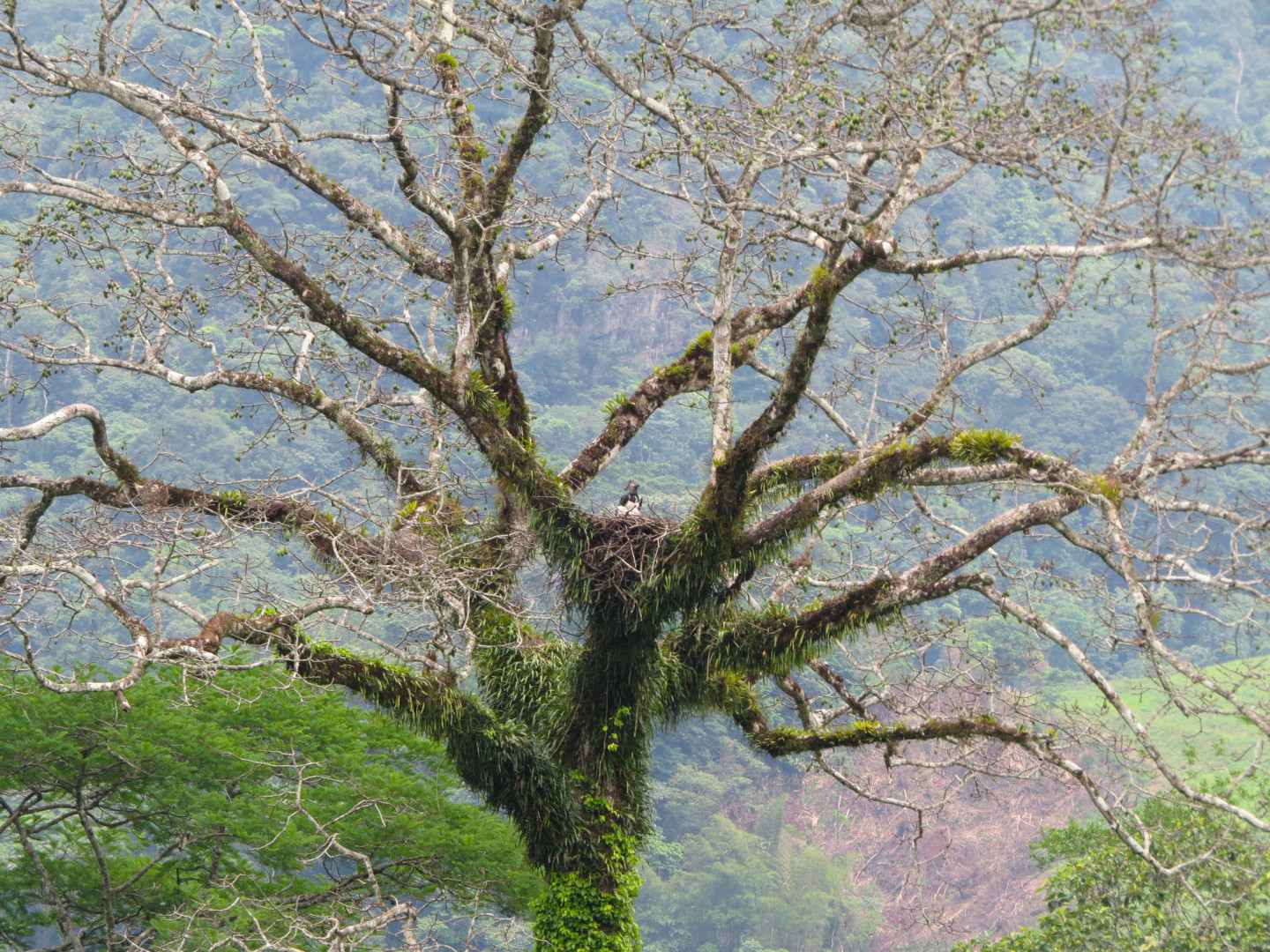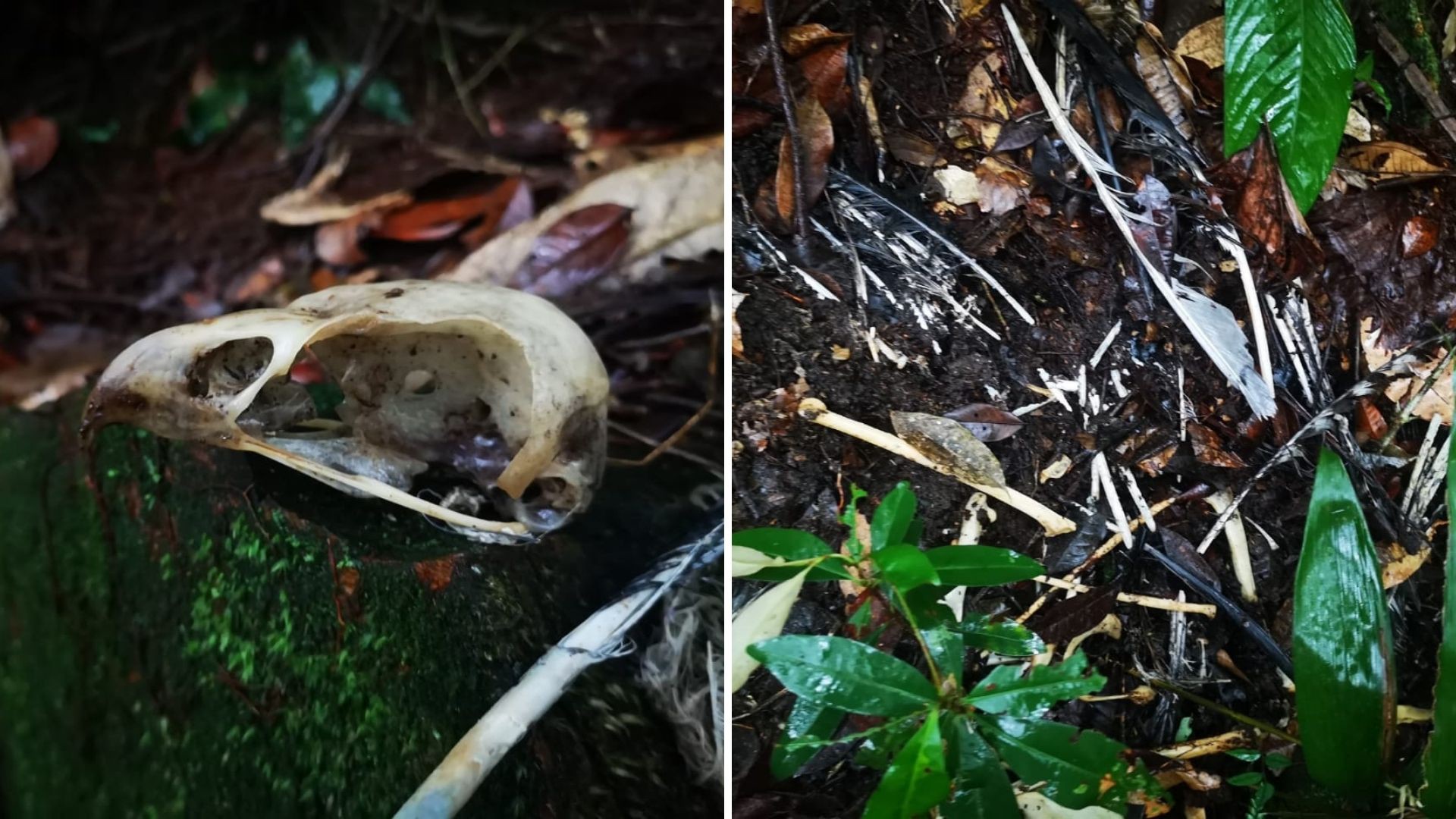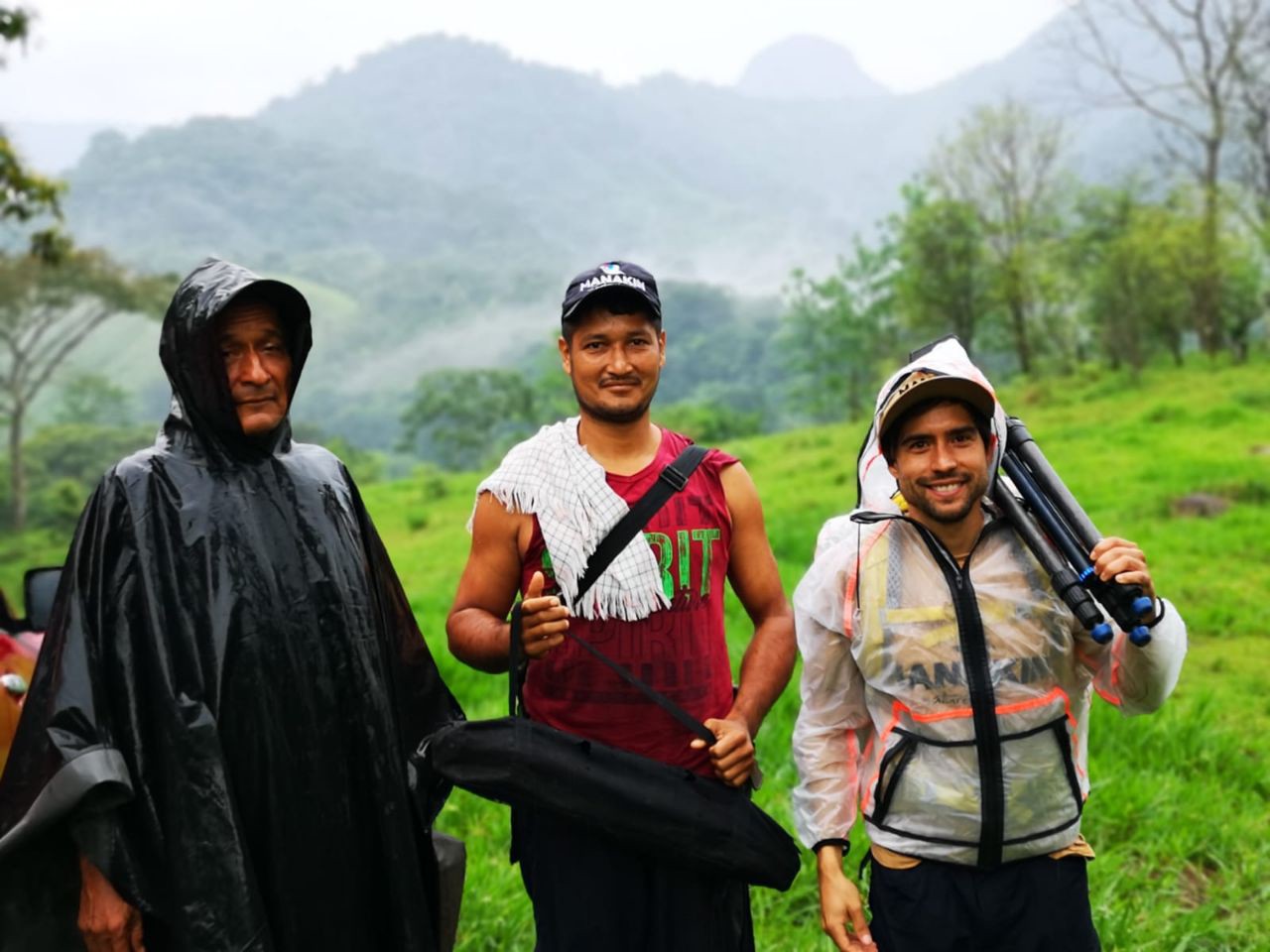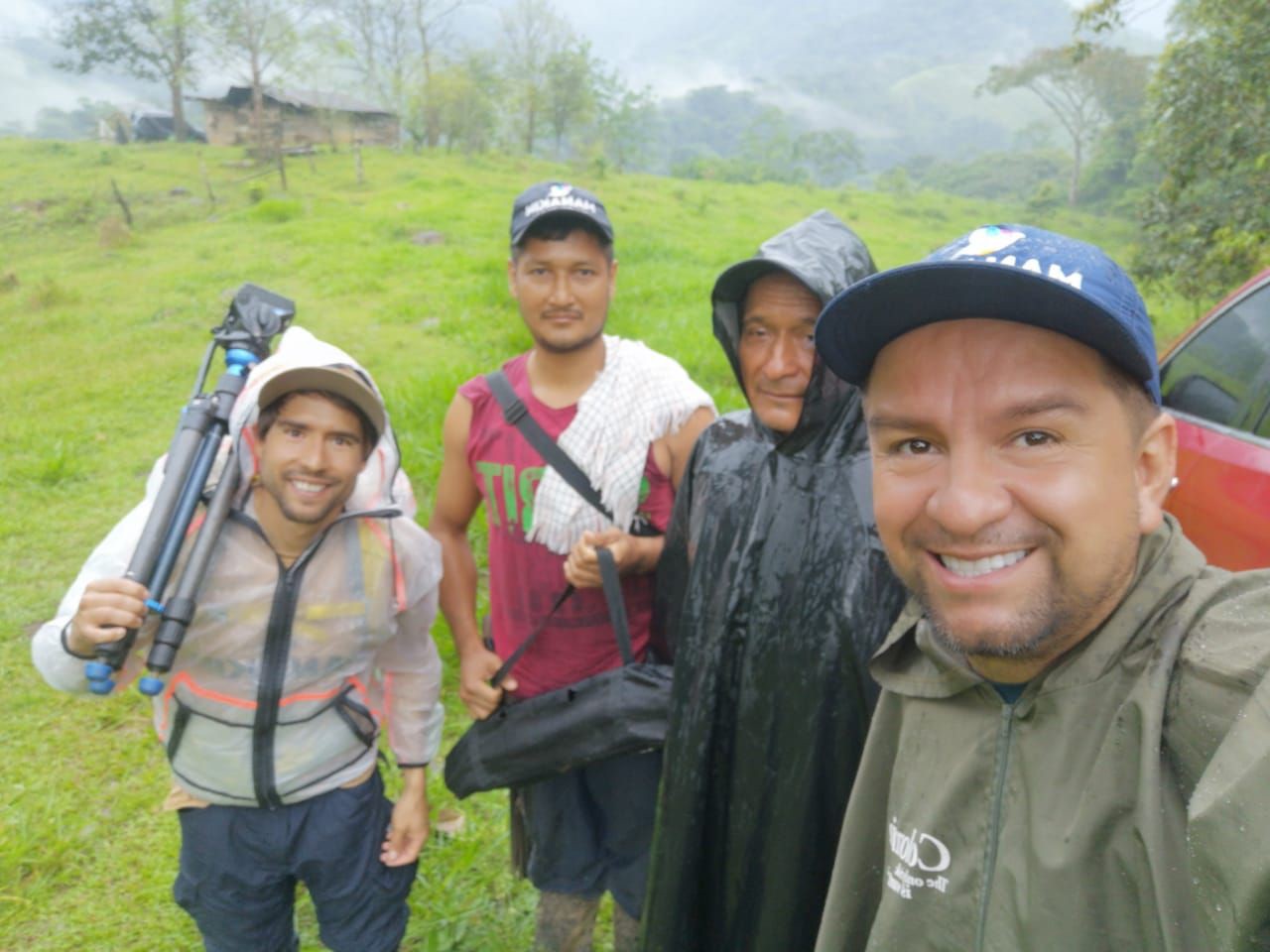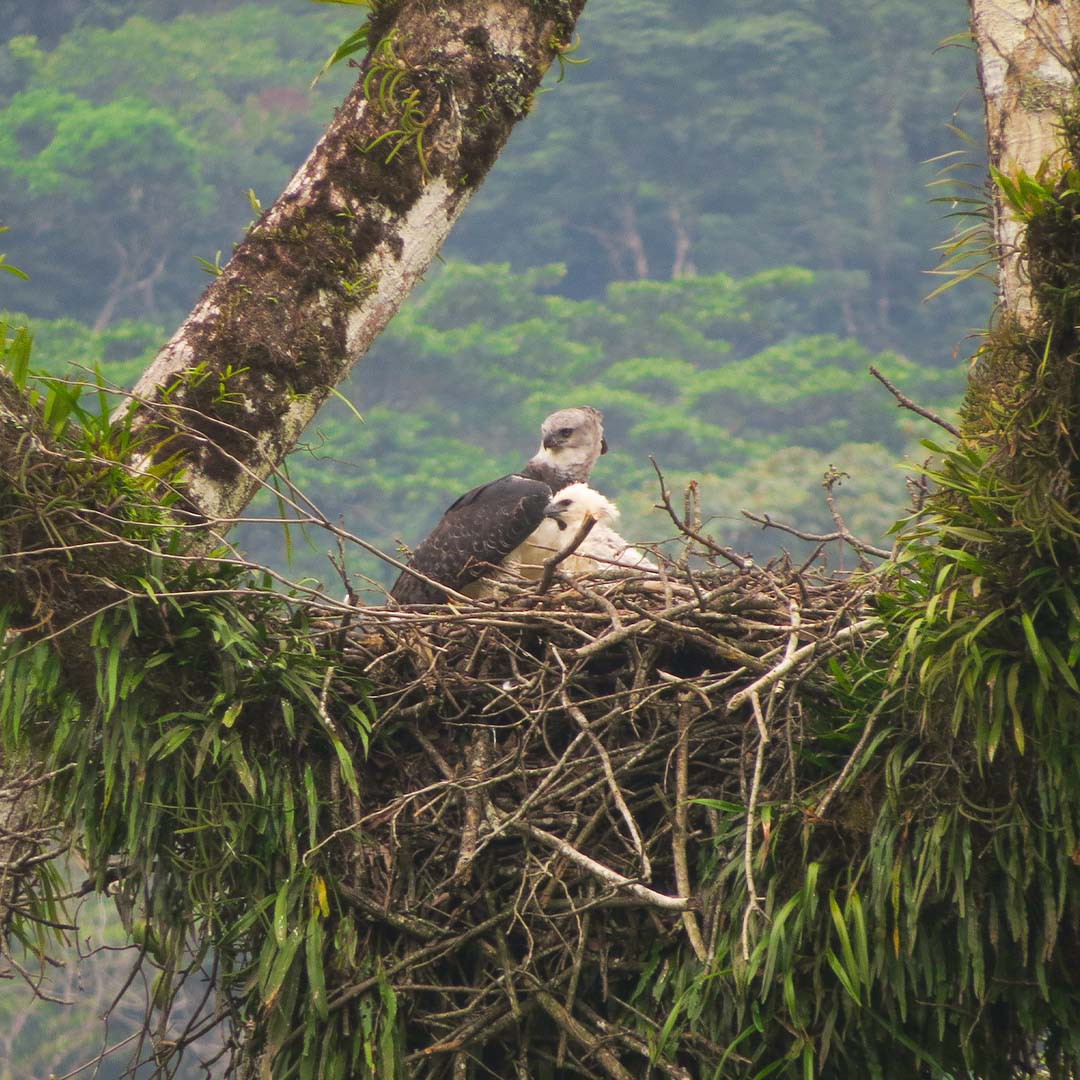
Birding and Conservation – Helping to Save the Harpy Eagle in Colombia
Our second scouting trip started on late April, our main aim was to help in monitoring the nesting site but also check other potential places after talking with some local members along the research area. Once in the town we drove for about an hour, the gravel road turned into a real bumpy one til the end of the road and then a 2 miles walk over the grasslands and into the forest along a river, I felt a contrast of feelings along the walk, the beauty primary forest was constantly interrupted by open areas mainly for cattles and eventually some crops and that make me think immediately about the potential threats for the Harpy Eagle (and the other species). We kept walking when the local guide pointed to a small group of Ornate Titi Monkeys and later Squirrel Monkeys, a couple of record shots for the evidence before we arrived at the nest. Once in place we set our equipment (tripods, cameras, binoculars…) and enjoy the beauty “baby” for a while…yes “baby”…is only about 4 months old but is bigger than a Hawk Eagle! amazing moment! It was about 9am.
Our two local guides and also guardians of the nest sat down, put out their notebook and took notes about behaviour or any other important information. We waited for about 9 hours for the adult female or male, during that time I kept wondering about the landscape…the nest is on a Ceiba tree (also known as Kapok or Silk Cotton) is a big tree (huge if you compare with the other ones in this area) the nest is located about 30 metres over the ground, stands over the forest as a perfect view point, and provide a home for countless species of animals including birds which nest in the tree’s high perches, mammals use the enormous limbs as aerial highways, frogs raise their tadpoles in the tiny pools that collect in bromeliads, and insects reach the peak of their diversity in the canopy of giant trees like the Ceiba, the tree is near to a big creek and basically at the forest edge, next to the tree is the open grassy area for some cattle, I realised the two big problems immediately: humans because is on expose area and visible perch – perfect for shooting – and cattle ranching which is growing fast around! after a long day of waiting, the adults never appeared around, so we decided to go back.
PS – next day local guide spent the whole day taking notes. An adult female came to the nest with a piece of what seems to be part of a Sloth!
On our second full day in the field while the local guide was monitoring the nest Luis and I decided to visit another place about 2 hours from our locations, as usual after the paved road, we drove on the gravel and later on a bumpy and extremely slippery road, a campesino breakfast and a short talking with one of the locals who told us about a nest of the “Aguila Churuquera” (local name for the Harpy, Aguila: Eagle, Churuco: local name for Lagothrix lagotricha – Common Woolly Monkey; Aguila Churuquera: “Woolly Monkey eating Eagle”), according with him, he saw the adult Eagle working on the nest to be reused – at least a couple of weeks before our arrival- we drove a bit more and then a walk into the forest. The singletrack leads to a few farm houses including the local farmhouse, and cross a primary forest with some patches of open areas, after about 30 min of walk we arrived at the place, we jumped off of the path into the forest for a few metres and we saw the nest! This time the nest was hidden into a big patch of forest, located in a canyon, built on a Abarco tree (Cariniana pyriformis – Colombian Mahogany), again a huge tree with precious timber! The tree is endangered too! we walked closer to the nest and unfortunately we found the whole body of an adult Harpy Eagle on the ground. We found no evidence to know what caused its death. this is a sad new but also was a great opportunity to talked with the locals about the importance of this specie and the tourism potential that a specie like this could be, also the value of conservation and its role in nature.
After a heavy and long rain night, we decided to visit again our nesting site, we knew the adult female must be around, the baby Harpy needs protection against the water since its plumage does not seem to be waterproof yet. again the gravel road, the bumpy one and the walk! but this time the river along the singletrack flooded part of the path and was flowing really strong, forced us to made our own trail into the forest, still rainy… we arrived to the nest at 9 am, set everything and watched, only the chick was on the nest, completely soggy! After a short scan we saw the adult female in the distance, about 400 metres from the nest, so we prepared everything for her arrival. 1 hour, 2,3,4….4pm the adult female leave her perches and flew into the forest, opposite to the nest! during this time we saw many interesting things, other birds, Woolly monkeys crossing under the nest and using the Ceiba tree as a bridge, raptors flying over the nest and always, Morocho (the chick) displaying in defence of itself! at 4pm a huge dark cloud was coming, we packed everything and time to walk back…on the way, walking into the dark forest with low visibility and leading the group a Common Lancehead on the path! I crossed my leg no more than 10 inches from its head! I noticed the viper at the last moment and luckily advised the other ones behind me, it was ready to attack!
During these 4 months of citizen science, involving members of the community, we got great behavioral records of this Harpy Eagle family and their calf we call Morocho! At this point I would like to thanks to our locals in charge of the monitoring and talk with the locals about the importance of conservation of this specie: Johan (Alias Morocho, the Harpy was named after his nick name) and Daniel. They have the most important role in this task, 3 days a week walk to the area and spent the whole day taking notes, videos and photos. Also our guest, who decided to donate, they must know Manakin NT is paying a half time salary to Morocho and Daniel for their intensive work and also the company provide them with a compact camera and other elements to be used at the field.
One day, Morocho (the local guide who is one of the members of the community and surveying the monitoring), sent a message saying that a new harpy eagle chick had arrived in the nest, which was interacting with the female and the chick, however, they were not giving much attention! When Morocho sent this message we were intrigued and waiting for the photo and video that he took of this unusual record of a new harpy eagle arriving at the nest! However, when we received the photos and videos, we realised that a Black and white Eagle arrived, close to the nest, and it was actually interacting with the nest, and taking advantage of the animal carcasses brought to the chick! However, the chick was already used to the presence of the Black-and-chestnut Eagle and didn’t even care much about it!
Throughout these months it is interesting to visualize Feeding Behavior! The female stays in the nest an average of 80% of the time! During that time, she carried out cleaning activities, maintenance of the nest and removing animal carcasses to other areas! A super interesting behavior is when the female starts to vocalize as an attempt to call the male! In a video we recorded, she vocalized for 6 minutes, until the male arrived at the nest, watch a cut of the video below!
Feeding Behavior was also recorded numerous times by our local monitors! Here, without a doubt, was a learning moment for them! Before they killed the Harpies with the excuse that she attack their chickens, however while they were monitoring the nest, no time of arrival of the male with a chicken as prey was recorded! They were surprised at the feeding behavior of a harpy eagle couple with a diversity of food! During these months we recorded the couple feeding the chick with: Coatis, Nine-banded armadillo, Sloths, Woolly Monkeys, Squirrel Monkey and Snakes ! So they were able to learn that the harpy eagle will not hunt the chickens on their properties, it was a great moment for our environmental education work with community member.
One of the great problems of the local is the deforestation of the forest! That’s why we are constantly looking for resources to buy land! And so to be able to conserve and reforest much of the surrounding land!
HELP US SAVE MOROCHO, THE HARPY EAGLE, HIS MOM, HIS NESTING PLACE AND HIS NATURAL HABITAT.
Our PayPal Donation Channel https://www.paypal.com/donate/?hosted_button_id=9JV9UUUSLFJTE
If you have any ideas and want to get more deeply involved in this project through conservation, environmental education, research and community social and economic development, please write to us at info@manakinnaturetours.com together we can protect the Harpy’s habitat in Colombia.

